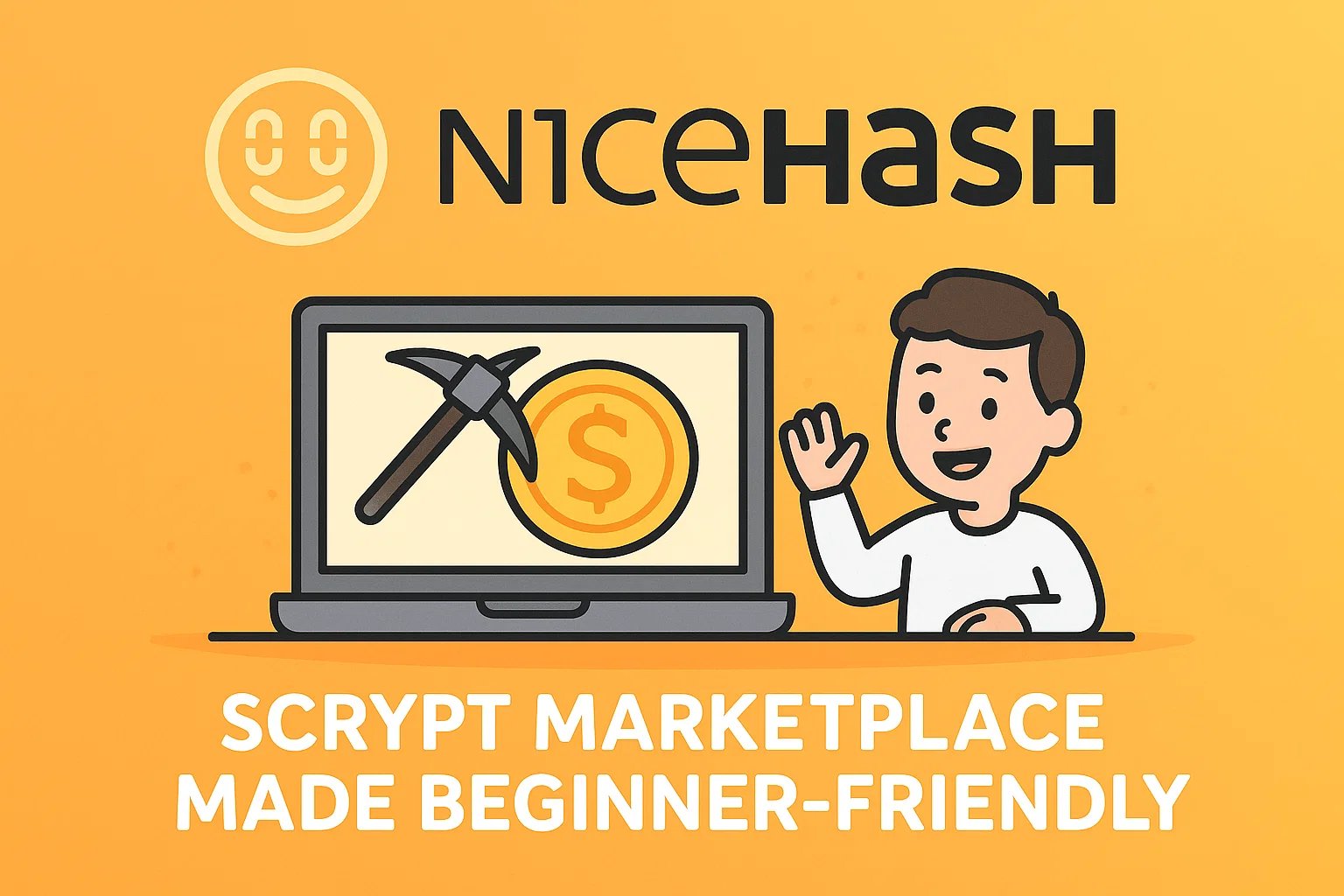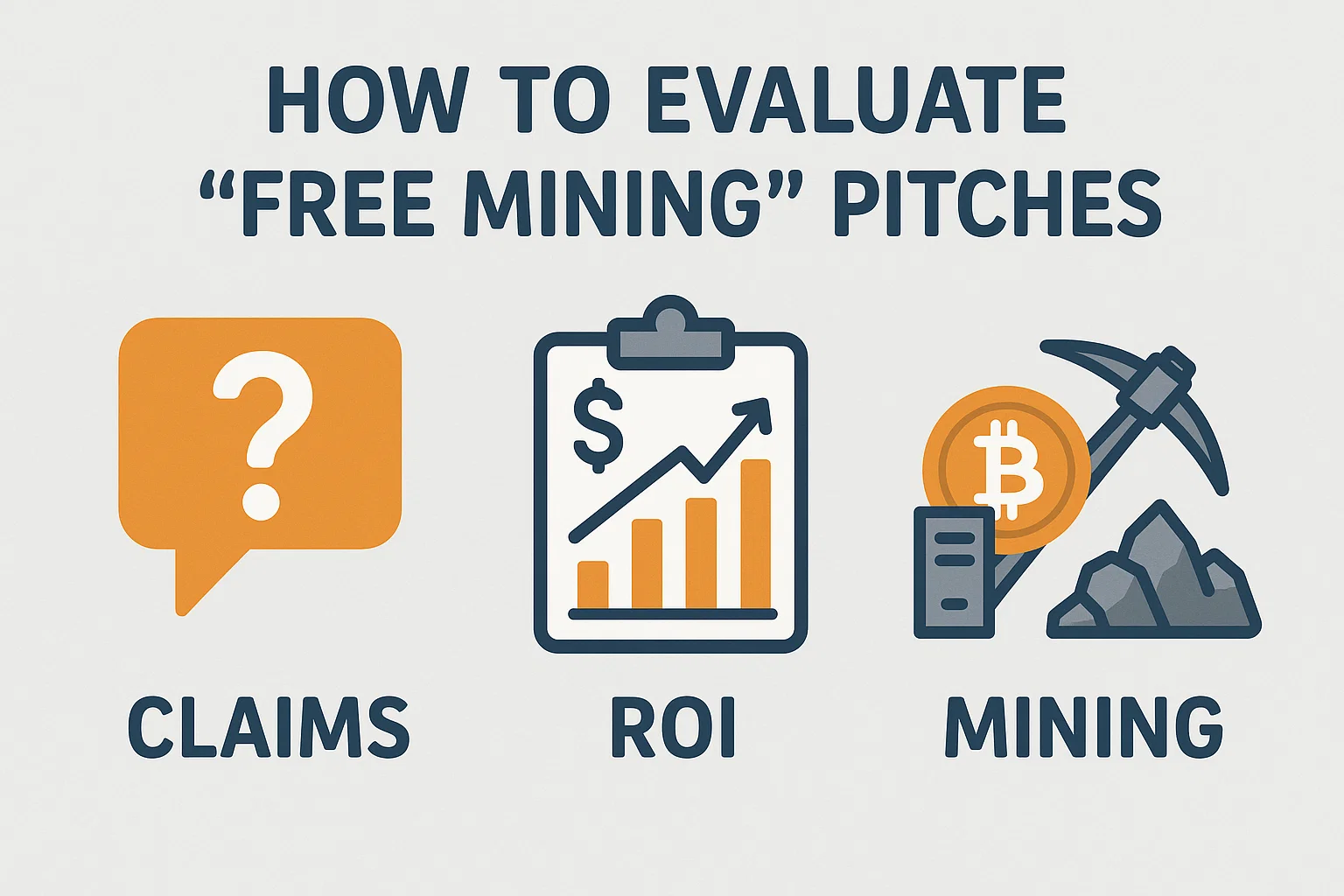The appeal of Litecoin cloud mining in 2025 is simple: you want exposure to LTC mining rewards without buying loud, heat-spewing ASICs or negotiating electricity rates. Instead of building a rig, you rent hashrate or remotely host a. Scrypt miner in a professional facility, often with automated payouts and dashboards that show your earnings in real time. For newcomers, this can be the fastest path from curiosity to first payout—provided you choose credible providers and understand the trade-offs.
Before we dive in, a quick primer. Litecoin uses the Scrypt algorithm under a Proof-of-Work (PoW) consensus, and—critically for profitability—many miners participate in merged mining with Dogecoin, meaning the same Scrypt work can earn DOGE alongside LTC without extra power draw. That’s why many cloud and hosting operators emphasize Scrypt capacity and DOGE+LTC output. If you’re new to this space, grasping those two facts—Scrypt and merged mining—helps every choice you’ll make.
You’ll see both models below, with clear notes on who they suit, what makes them underrated, and how to evaluate them safely. Where possible, we point to public information confirming Scrypt/Litecoin support, merged-mining context, or the business model. We’ll also include practical, beginner-friendly tips so you can start without over-optimization or hype.
How we picked the six “underrated” platforms
We focused on providers that are either overlooked by mainstream lists, are better known for Bitcoin but have credible Scrypt pathways, or run legitimate hosting that beginners can treat like cloud mining. We also looked for transparent materials about algorithms, merged mining, or Cloud Hash Rate operations. Finally, we prioritized platforms that help newcomers start small, understand fees, and scale carefully.
What to check before you spend anything
Make these non-negotiables part of your due diligence. Confirm they actually support Scrypt/Litecoin today; the market changes quickly and inventories sell out. Check: contract length, daily maintenance fees, payout coin, minimum withdrawal, KYC requirements, and whether you have visibility into the pool or address that is mining on your behalf. Don’t be shy about testing with small amounts first—cloud mining scams exist.
NiceHash (Scrypt marketplace made beginner-friendly)

If you’ve only heard of NiceHash in the context of GPU coins or SHA-256, you might have missed how relevant it is for Litecoin cloud mining via hashpower rental. NiceHash runs a liquid marketplace where you can buy Scrypt hashrate and point it to a pool that pays you in LTC or in BTC; it’s flexible and ideal for testing strategies with modest budgets.
The company publicly lists Scrypt among its supported algorithms, showing live marketplace metrics, which reassures beginners that orders actually clear and hashpower is available. In 2025, NiceHash has even highlighted Scrypt-specific initiatives (like Scrypt firmware developments in the wider ecosystem), underlining its seriousness about the algorithm that powers Litecoin and Dogecoin.
Why it’s underrated for beginners: Many newcomers assume NiceHash is only for Bitcoin or advanced miners. In reality, the marketplace is a low-commitment way to understand hashrate economics, experiment with merged mining pools, and learn how difficulty and payouts ebb and flow—without locking into long contracts. You can start small, watch results, and refine orders as you go. If you’re comfortable with exchanges, you’ll find the UX familiar.
Bitdeer (Cloud Hash Rate and hosting with enterprise DNA)
Bitdeer is best known for large-scale Cloud Hash Rate offerings and professional hosting. While headlines often focus on Bitcoin, Bitdeer’s educational content and operations updates illustrate a broader infrastructure business that includes cloud subscription plans and hosting. For beginners, that matters, because operators experienced in large-scale mining tend to run safer facilities, provide better dashboards, and offer clearer terms—skills that carry over to Scrypt hosting when capacities are available. Bitdeer’s investor materials confirm Cloud Hash Rate as a line of business, which is an important “real company” signal that new users can verify. Bitdeer also publishes approachable guides on merged mining, explaining how Litecoin and Dogecoin can be mined together without additional power.
Why it’s underrated for beginners: Bitdeer is often pigeonholed as “just for Bitcoin.” In practice, beginners who want an LTC/DOGE Scrypt path can benefit when an enterprise-grade operator allocates Scrypt capacity or offers remote ASIC hosting for L-series machines. If you ever do graduate to owning an Antminer L7/L9, having a host that understands uptime, repairs, and power is invaluable.
BeMine (Cloud + hosting with clear Scrypt miner references)
BeMine straddles the line between cloud mining, hosting, and ASIC sales, and has publicly referenced Antminer L7/L9 in recent activity updates—useful breadcrumbs for anyone pursuing Litecoin/Dogecoin merged mining via Scrypt gear. BeMine’s site and press content position it as an accessible, all-in-one onramp: buy shares or whole machines, host them in-house, and monitor payouts. For a newcomer intimidated by hardware, that “store + host + mine” loop can feel refreshingly simple.
Why it’s underrated for beginners: BeMine is widely known in mining circles but less so by general crypto beginners searching for Litecoin cloud mining specifically. Its references to L-series Scrypt miners and educational content on altcoin mining strategies make it easier to understand how LTC fits into the broader picture.
ECOS (Contracts and hosting—worth checking for Scrypt inventory)
ECOS is often pitched as a “Bitcoin-first” operation, but reputable roundups include it among providers to consider for Litecoin cloud mining and contract-style exposure. For beginners, the key advantage is the platform’s structured contracts, mobile app, and introductory UX—features that reduce the learning curve. When ECOS allocates Scrypt capacity, it can be one of the cleaner, lower-friction ways to get an LTC-linked payout stream without touching an ASIC. Because contracts and inventory vary over time, you’ll need to check current availability before you commit.
Why it’s underrated for beginners: Many “best of” lists lump ECOS under generic “cloud mining,” and BTC steals the spotlight. For newcomers who value guidance, a contract marketplace that occasionally supports Scrypt/LTC is extremely convenient.
NiceHash-adjacent Scrypt hosting (EndlessMining and similar providers)
If you like the idea of owning a Scrypt ASIC without plugging it into your apartment wall, remote hosting is a practical middle ground. Companies such as EndlessMining publicly list hosting for Antminer L7/L9 units, with transparent kWh rates and deposits. You supply the machine (purchased outright or through the host), and they provide rack space, power, and maintenance. This behaves much like cloud mining—you view dashboards, choose pools that support LTC+DOGE merged mining, and get routine payouts—except the hardware is yours. For many beginners, that psychological shift matters: you’re not just renting hashpower; you’re taking title to an asset.
Why it’s underrated for beginners: Hosting is sometimes dismissed as “only for pros,” but beginner-friendly operators publish plain-English pricing and help you point the machine at an LTC/DOGE pool. If you later change your mind, you can resell the ASIC.
ViaBTC ecosystem path (education + pools; watch for cloud slots)
While ViaBTC is primarily known for its mining pools, it also publishes educational pieces on LTC/DOGE merged mining that demystify configuration and payout behavior. That matters if you pair a hashrate rental platform with a merged-mining pool to receive Litecoin and Dogecoin payouts. Even when dedicated “cloud mining” slots are scarce, ViaBTC’s ecosystem offers a credible “beginner stack” when combined with marketplace hashrate or hosted Scrypt ASICs pointed at ViaBTC’s pool. Beginners can start small with rented Scrypt hashrate, learn how merged payouts work, and scale later.
Why it’s underrated for beginners: People often search for “Litecoin cloud mining” and miss the reality that pools plus hashrate rental can accomplish nearly the same thing with more control. ViaBTC’s explanations make that pathway clearer.
A quick refresher: why Scrypt and merged mining matter
Litecoin’s Scrypt PoW is memory-hard and ASIC-dominated in 2025, which is why you see references to Antminer L7/L9 in so many discussions. Because Dogecoin adopted AuxPoW merged mining years ago, Scrypt miners can earn DOGE alongside LTC without increasing energy usage. That mechanic supports revenue for miners, stabilizes hashrate for both chains, and makes Scrypt capacity attractive for cloud providers and hosts that serve beginners. Understanding this dual-reward dynamic helps you read any provider’s pitch through a realistic lens.
Step-by-step, a low-stress way to start in 48 hours
Start with a small experiment. Create a Litecoin wallet you control. Choose a Scrypt path—either hashrate rental or a tiny slice of hosted Scrypt capacity—and point it at a merged-mining pool that pays LTC (and possibly DOGE). Fund the experiment with money you can afford to learn with, not to lose. Track your payouts daily for a week. Compare what you received against what you expected after fees. This hands-on loop, more than any spreadsheet, will build your intuition about network difficulty, pool luck, and maintenance fees—concepts you’ll see referenced in every provider’s docs and in neutral mining guides.
Deep dives on each pick for 2025 beginners
NiceHash: fast experimentation with real Scrypt liquidity
When you open NiceHash’s Algorithms page, Scrypt is right there with live marketplace stats. That transparency is gold for beginners. You can see if Scrypt demand is hot, how many miners are selling power, and rough price physics for your order size. Because merged mining is pool-side, you pair your NiceHash order with a pool that sends LTC/DOGE rewards to your wallet. As your comfort grows, you can script orders around times of day or difficulty changes, though most beginners do fine with manual orders and a steady pool.
In 2025, broader coverage around Scrypt firmware and efficiency improvements underscores that Scrypt isn’t a backwater; it’s a live, evolving ecosystem. When firmware or hardware updates move the needle for L-series miners, hash markets often reflect that shift. Staying close to these signals will make your orders smarter.
Bitdeer: enterprise guardrails for small users
While you won’t always find Scrypt cloud slots in stock, Bitdeer’s combination of Cloud Hash Rate plus. hosting gives beginners an unusually professional on-ramp when capacity opens. Its operations updates show a large, real business with self-mining, hosting, and cloud customers—exactly the kind of footprint you want behind your first foray into remote mining. If you later move up from rental to hardware ownership, continuity within the same platform keeps your learning curve gentle.
Bitdeer also explains merge mining in plain language, which helps you configure payouts intelligently regardless of where you source the Scrypt hashrate. Keep a watchlist alert for Scrypt contracts; when availability appears, act quickly and read the fine print twice.
BeMine: “store + host + mine” for Scrypt learners
BeMine’s messaging about altcoin miners—including Antminer L7/L9—and its frequent campaigns make it attractive to curious beginners who want an all-in-one experience. You can buy a share or a whole machine, host it in their facilities, and target an LTC/DOGE pool. That feels “cloudy,” but with the extra benefit that you can document the specific unit assigned to you if you opt for dedicated hardware. For beginners who want more control than a short contract but less hassle than a home setup, this hybrid is a sweet spot.
ECOS: a structured, app-first onramp
ECOS appears on reputable “best Litecoin cloud mining” lists, especially for its streamlined contracts and mobile experience. If you’re a newcomer who values guardrails, ECOS’s UX and account structure can make your first LTC steps less intimidating. Inventory varies, so verify that Scrypt or Litecoin contracts are active when you’re ready to start. If not, waitlists and alerts can help you pounce when slots open.
EndlessMining-style hosting: own the ASIC, outsource the headaches
Hosts that publish clear pricing for L7/L9 machines, deposits, and monthly rates are beginner-friendly because you can model your breakeven in minutes. Once online, point your unit at a merged-mining pool and monitor payouts. It looks and feels a lot like cloud mining, except you retain hardware value and optionality. Because Scrypt machines can be resold, some beginners prefer this path over fixed-term hashrate rentals.
ViaBTC’s pool-centric path: pair a pool with rental or hosting
Even if ViaBTC doesn’t have a direct “cloud” product available when you check, its blogs and pool support for DOGE+LTC merged mining unlock the beginner strategy of combining a hashpower marketplace order with a merged-mining pool. This two-piece approach is modular, transparent, and educational—you can swap components if fees or performance disappoint. For many first-timers, that control is empowering and reduces the fear of being “stuck in a contract.”
Key concepts every beginner should understand in 2025
Scrypt and ASICs. Litecoin mining is ASIC-only today; CPUs and GPUs are not competitive. If a provider promises abundant LTC from a phone or laptop, treat it skeptically. Learn the basics of ASIC efficiency, hashrate, and power so you can sanity-check provider claims. Introductory guides emphasize the role of specialized hardware and how fees and difficulty shape payouts.
Merged mining boosts revenue. Because Dogecoin accepts AuxPoW from Litecoin Scrypt work, you can receive dual rewards without extra energy. Trust providers that explain this clearly and show how they share or convert DOGE for you. Educational resources from exchanges and operators outline the benefits and mechanics.
Contracts vs. hosting. Contracts are simple but fixed; hosting is flexible but requires a bit more learning. Many beginners try a small contract first, then graduate to hosted hardware once they’re comfortable with the flow of payouts, maintenance fees, and pool settings.
Watch the maintenance line. In cloud mining, daily maintenance fees are where economics live or die. A low sticker price with a high daily fee can underperform a slightly pricier contract with lean maintenance.
Start small, measure, iterate. The best way to learn is to deploy a tiny budget across two distinct approaches—for example, a short hashrate rental and a month of hosted Scrypt—then compare real payouts.
How to evaluate claims, ROI, and “free mining” pitches

Avoid promises of outsized daily returns or “guaranteed” income. Focus on verifiable details: algorithm support (Scrypt), pool configuration, maintenance fees, payout currency, and transparent dashboards. Many press-release-style “top lists” on the web blur advertising and analysis; treat them as starting points, not gospel. Cross-check claims with the underlying platforms, mining pool documentation, or neutral educational materials about Scrypt PoW and merged mining.
Putting it all together: a beginner’s action plan
Open a non-custodial Litecoin wallet and a second wallet for Dogecoin if you plan to keep DOGE instead of auto-converting. Choose one provider from the six above based on your comfort level with contracts vs. hosting. If you’re extremely new, NiceHash, plus a merged-mining pool, is a friction-light way to learn with $20–$100. set and forget, watch for ECOS or Bitdeer Scrypt capacity, and start with their minimum term owning. hardware, check BeMine or a host listing L7/L9 capacity, and begin with a fractional share or a single unit.
During your first week, log everything: rental cost, expected output, actual output, maintenance fee, and pool fee. When you can explain the variance between expected and actual in your own words, you’re ready to scale. That single habit is what separates lucky beginnings from long-term Litecoin cloud mining competence.
See More: Bitcoin mining 2025 Simple How to Profit in 2025 with Smart Strategies
Conclusion
>In 2025, the most practical path for beginners isn’t chasing sensational lists—it’s understanding Scrypt, merged mining, and the business. models behind hash rate rental and remote hosting. The six options above are “underrated” not because they’re tiny or. unknown, but because newcomers often overlook them or assume they’re only for other coins. With a modest budget, a realistic timeframe. and careful due diligence, you can learn the ropes. avoid the obvious pitfalls, and build an LTC strategy that survives beyond your first payout cycle.
Keep your expectations grounded. >Litecoin cloud mining is not a shortcut to. overnight wealth; it’s a structured way to participate in. network security and accumulate crypto, especially when you leverage it. merged mining to capture DOGE alongside LTC. Start small, verify everything, and use your first month as a paid education. The knowledge compounding you’ll get from that approach is worth far more than any banner promise of “guaranteed daily profits.”
FAQs
Q: Is Litecoin cloud mining still viable in 2025 for small budgets?
Yes—if you treat it as an educational, incremental strategy. Short Scrypt contracts or small hashrate rental orders let you learn without large sunk costs. Profitability varies with LTC price, network difficulty, and fees, so think in months. not days, and favor providers that clearly document algorithm support and payouts.
Q: What’s the difference between cloud contracts and hosted hardware?
Contracts are timed rentals where the operator controls the hardware, and you receive payouts minus maintenance fees. Hosted hardware means you own an ASIC (like an L7/L9) placed in a professional facility; you choose the pool and keep more control. Both approaches can feel like “cloud mining,” but hosting preserves hardware resale value.
Q: Why do people keep mentioning merged mining with Dogecoin?
Because Dogecoin adopted AuxPoW, miners can submit the same Scrypt work for both LTC and DOGE, often increasing total rewards without extra electricity. Many pools and operators support this, making it a cornerstone of Scrypt-based strategies in 2025.
Q: How can I spot red flags before buying a contract?
Be skeptical of guaranteed ROI, “free unlimited mining,” or platforms that won’t disclose pool endpoints, maintenance fees, or withdrawal minimums. Prefer operators that publish algorithm support (e.g., Scrypt) and provide dashboards or third-party verifications you can check. Use small test purchases first and confirm payouts hit a wallet you control.
Q: Do I need to understand ASICs if I’m using the cloud?
At least the basics. Even with cloud contracts, your returns depend on Scrypt ASIC efficiency, data-start=”22705″ data-end=”22719″>difficulty, fee schedules, and uptime. Reading an introductory mining guide pays off. quickly. Because it helps you evaluate. marketing claims and model conservative outcomes before you scale.

















